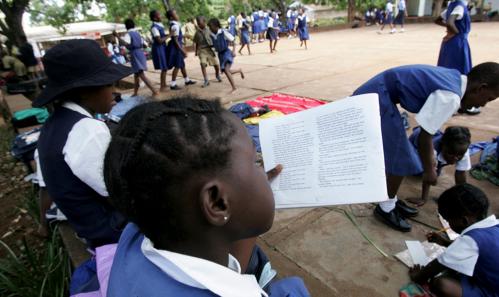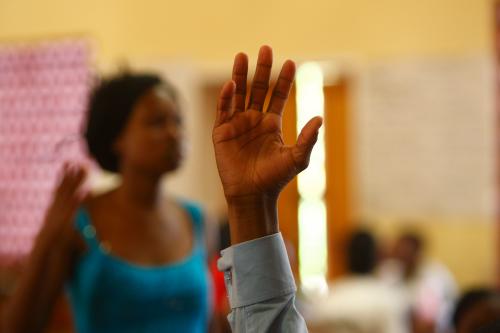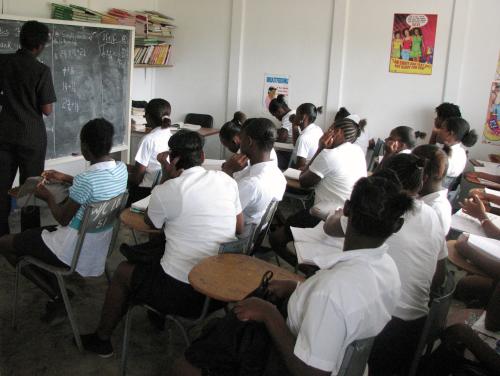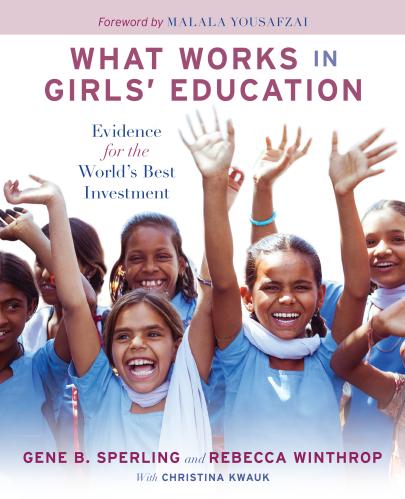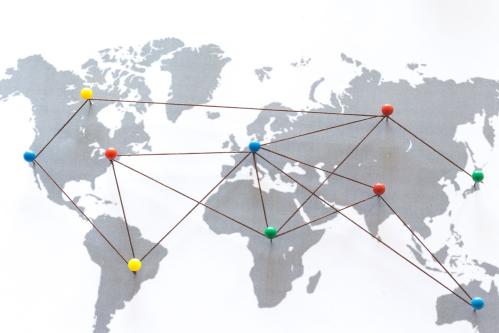Zimbabwe has one of the highest rates of orphaning in the world with 25 percent of all children having lost one or both parents due to HIV and other catastrophic causes (UNICEF 2010). Many of these children lack the educational services they need for academic success and to thrive in society. This is mainly due to fractured government agencies along with lack of proper documentation of orphans and vulnerable children (OVC) and insufficient case management capacity. Although education provides the knowledge and skills needed for child protection and
development, most OVC, particularly adolescent orphan girls in Zimbabwe are dropping out of school due to lack of transitional services that could address the challenges of poverty, HIV/AIDS, intrahousehold discrimination and psychosocial stress. The situation continues despite the availability of multisectoral responses, child-friendly policies and strategies, increased investments in education and donor-funding coordination mechanisms in Zimbabwe (Foster 2010).
A study I conducted in the urban community of Mufakose, Harare, identified the major barriers faced by OVC, particularly adolescent girls, in receiving the educational services they require to navigate the challenges they encounter in school, home and the community. The study projects that at least 787 OVC in the Mufakose Community have fallen through the cracks of the social services system and that more than 124 are out of school. To ensure that OVC who now fall through the cracks instead begin to receive the education they deserve, this paper recommends service delivery reform through community transition agencies.
Community transition agencies provide transitional services and support that enables OVC to meet age-appropriate education milestones and to earn high school and post-secondary school diplomas that will enable them to achieve significantly brighter outcomes as adults (Leone and Weinberg 2010). As community gatekeepers, these agencies act as buffers to protect and promote the rights of OVC who are at risk of disconnecting from the social services systems. Community transition agents are service brokers, ensuring that the educational and psychosocial
needs of OVC are identified and matched to the available resources in the community, facilitating increased enrollment and school retention. Overall then, through advocacy and capacity building, transition service delivery by these agencies can bridge social services gaps fostering positive schooling experiences, academic success and psychosocial well-being. As affirmed by Atkinson (2007:15);
Successful transitions build respect for individual differences, encourage understanding of the whole child, create a sense of trust and belonging, and reduce child and family anxiety toward school. Transitions that bring together the home, school, and community continue the collaborative effort and promote the common goal of providing successful school experiences for all children.
Accordingly, this paper advocates a community systems framework for coordinating high-quality transitional services to enhance educational attainment for adolescent orphan girls in Zimbabwe. After the first introductory section, the paper is organized in six thematic sections. The second and third sections outline the situation of OVC in general and Zimbabwe’s educational responses for OVC. The fourth section explores transitional education needs and programs. The fifth section describes a case study conducted by the Blossoms Children Community in Mufakose to assess of OVC educational service delivery. And the sixth section highlights the solution for delivering transitional services for adolescent orphaned girls at the community systems level. The seventh section concludes.


